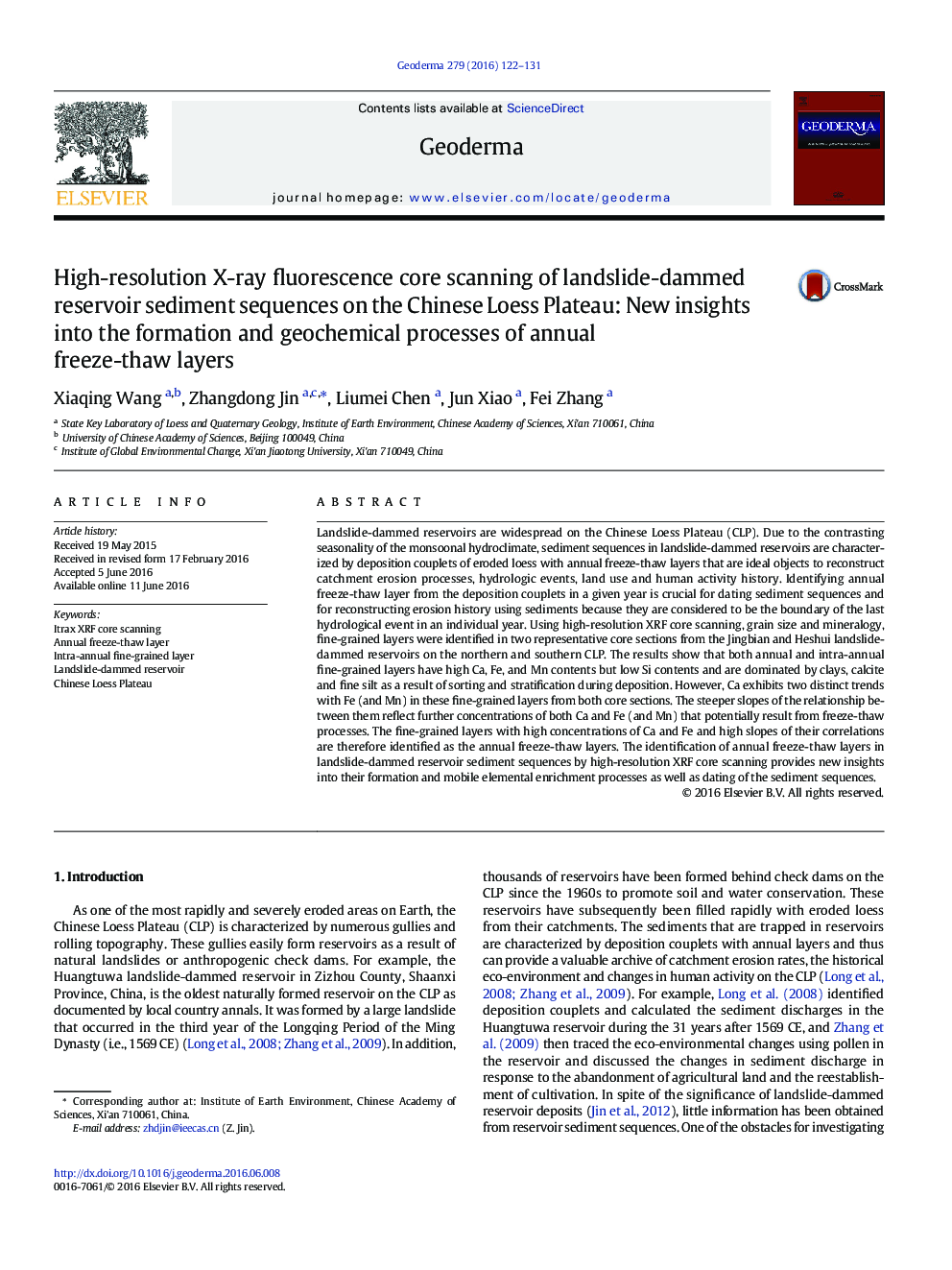| Article ID | Journal | Published Year | Pages | File Type |
|---|---|---|---|---|
| 6408320 | Geoderma | 2016 | 10 Pages |
â¢XRF core scanning is a robust approach for identifying annual freeze-thaw layers.â¢The layer with high slopes between Ca and Fe is identified as annual freeze-thaw one.â¢Insights into formation and geochemical processes of freeze-thaw layers are provided.
Landslide-dammed reservoirs are widespread on the Chinese Loess Plateau (CLP). Due to the contrasting seasonality of the monsoonal hydroclimate, sediment sequences in landslide-dammed reservoirs are characterized by deposition couplets of eroded loess with annual freeze-thaw layers that are ideal objects to reconstruct catchment erosion processes, hydrologic events, land use and human activity history. Identifying annual freeze-thaw layer from the deposition couplets in a given year is crucial for dating sediment sequences and for reconstructing erosion history using sediments because they are considered to be the boundary of the last hydrological event in an individual year. Using high-resolution XRF core scanning, grain size and mineralogy, fine-grained layers were identified in two representative core sections from the Jingbian and Heshui landslide-dammed reservoirs on the northern and southern CLP. The results show that both annual and intra-annual fine-grained layers have high Ca, Fe, and Mn contents but low Si contents and are dominated by clays, calcite and fine silt as a result of sorting and stratification during deposition. However, Ca exhibits two distinct trends with Fe (and Mn) in these fine-grained layers from both core sections. The steeper slopes of the relationship between them reflect further concentrations of both Ca and Fe (and Mn) that potentially result from freeze-thaw processes. The fine-grained layers with high concentrations of Ca and Fe and high slopes of their correlations are therefore identified as the annual freeze-thaw layers. The identification of annual freeze-thaw layers in landslide-dammed reservoir sediment sequences by high-resolution XRF core scanning provides new insights into their formation and mobile elemental enrichment processes as well as dating of the sediment sequences.
